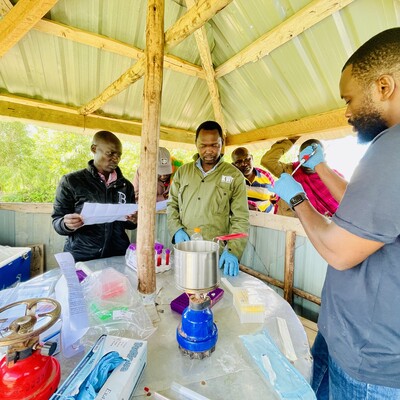
Systematic review of vectors and vector-borne diseases in small ruminants in Ethiopia
 This systematic literature review provides a comprehensive summary on major vectors and vector-borne diseases in small ruminants in Ethiopia.
This systematic literature review provides a comprehensive summary on major vectors and vector-borne diseases in small ruminants in Ethiopia.
For most of the vector-borne diseases, the summary was limited to narrative synthesis due to lack of sufficient data. Meta-analysis was computed for trypanosomosis and dermatophilosis while, meta-regression and sensitivity analysis was done only for trypanososmosis due to lack of sufficient report on dermatophilosis.
Owing emphasis to their vector role, ticks and flies were summarized narratively at genera/species level. In line with, 43 peer-reviewed articles passed the inclusion criteria out of 106 initially identified research reports. Data on 7 vector-borne diseases were extracted at species and region level from each source. Accordingly, the pooled prevalence estimate of trypanosomosis was 3.7% with 95% confidence interval (CI) 2.8, 4.9), while that of dermatophilosis was 3.1% (95% CI: 1.6, 6.0). The in-between study variance noted for trypanosomosis was statistically significant (p < 0.05).
Among the three covariates considered for meta-regression, only one (species) fitted the final model significantly (p < 0.05) and explained 65.44% of the between studies variance (R2). The prevalence in sheep (5.5%) increased nearly by 34% compared to goats (2.9%). The parasitic presence in blood was documented for babesiosis (3.7% in goats); and anaplasmosis (3.9% in sheep). Serological evidence was retrieved for bluetongue ranging from 34.1% to 46.67% in sheep, and coxiellosis was 10.4% in goats. There was also molecular evidence on the presence of theileriosis in sheep (93%, n = 160) and goats (1.9%, n = 265).
Regarding vectors of veterinary importance, 14 species of ticks in five genera, four species of Glossina and 4 genera of biting flies were reported. Despite the evidence on presence of various vectors including ticks, flies, mosquitoes and midges, research report on vector-borne diseases in Ethiopia are surprisingly rare. Especially considering the ongoing climate change, which is likely to affect distribution of vectors, better evidence on the current situation is urgently needed in order to prevent spread or to model future distribution scenarios.
Asmare, K., Abayneh, T., Sibhat, B., Shiferaw, D., Szonyi, B., Krontveit, R.I., Skjerve, E. and Wieland, B. 2017. Major vectors and vector-borne diseases in small ruminants in Ethiopia: A systematic review. Acta Tropica. http://dx.doi.org/10.1016/j.actatropica.2017.02.015
The activity was funded through the Livestock and Fish CRP and the International Fund for Agricultural Development (IFAD)-funded SmaRT Ethiopia Project – Improving the Performance of Pro-Poor Sheep and Goat Value Chains for Enhanced Livelihoods, Food and Nutrition Security in Ethiopia.


















